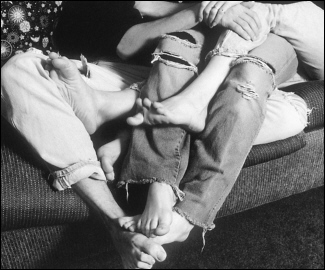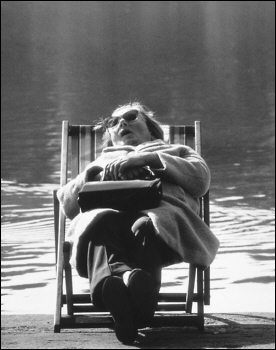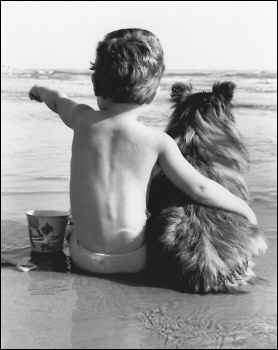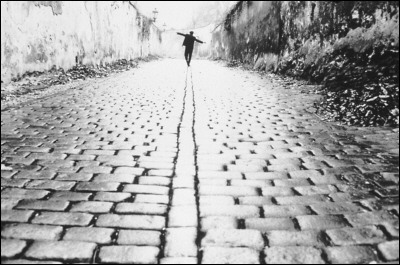A Short Guide to a Happy Life (3 page)

C'mon, let's be honest. We have an embarrassment of riches. Life is good.
I don't mean in any cosmic way. I never think of my life, or my world, in any big cosmic way. I think of it in all its small component parts: the snowdrops, the daffodils; the feeling of one of my kids sitting close beside me on the couch; the way my husband looks when he reads with the lamp behind him; fettuccine Alfredo; fudge;
Gone with the Wind, Pride and Prejudice.
Life is made up of moments, small pieces of glittering mica in a long stretch of gray cement. It would be wonderful if they came to us unsummoned, but particularly in lives as busy as the ones most of us lead now, that won't happen. We have to teach ourselves how to make room for
them, to love them, and to live, really live.
I learned to live many years ago. Something really bad happened to me,
something that changed my life in ways that, if I had had a choice, it would never have
been changed at all. And what I learned from it is what, today, sometimes seems to
be the hardest lesson of all.
I learned to love the journey, not the destination. I learned that this is not a dress rehearsal, and that today is the only guarantee you get.
I learned to look at all the good in the world and to try to give some of it back, because I believed in it completely and utterly. And I tried to do that, in part, by telling others what I had learned, even though so many people may have thought I sounded like a Pollyanna. By telling them this: Consider the lilies of the field. Look at the fuzz on a baby's ear. Read in the backyard with the sun on your face. Learn to be happy. And think of life as a terminal illness, because, if you do, you will live it with joy and passion, as it ought to be lived.


Anyone can learn all those things, out there in the world. You just need to get a life, a real life, a full life, a professional life, yes, but another life, too. School never ends. The classroom is everywhere. The exam comes at the very end. No man ever said on his deathbed I wish I had spent more time at the office.
I found one of my best teachers on the boardwalk at Coney Island many years ago. It was December, and I was doing a story about how the homeless suffer in the winter months. He and I sat on the edge of the wooden supports, dangling our feet over the
side, and he told me about his schedule, pan-handling the boulevard when the summer
crowds were gone, sleeping in a church when the temperature went below freezing,
hiding from the police amid the Tilt-A-Whirl and the Cyclone and some of the
other seasonal rides.


But he told me that most of the time he stayed on the boardwalk, facing the water, just the way we were sitting now, even when it got cold and he had to wear his newspapers after he read them. And I asked him why. Why didn't he go to one of the shelters? Why didn't he check himself into the hospital for detox?
And he stared out at the ocean and said, “Look at the view, young lady. Look at the view.”
And every day, in some little way, I try to do what he said. I try to look at the view. That's all. Words of wisdom from a man with not a dime in his pocket, no place to go, nowhere to be. Look at the view. When I do what he said, I am never disappointed.
PHOTO CREDITS FOR
A Short Guide to a Happy Life
Bettmann/Corbis
Kelly-Mooney/Corbis
Hulton Getty/Stone
Bettmann/Corbis
Margaret Ely/Swanstock/Image Bank
FPG International
David Zickl/Swanstock/Image Bank
E. O. Hoppé/Corbis
Bullaty/Lomeo/Image Bank
George Forss, Cambridge, N.Y.
Gandee Vasan/Stone
Luis Veiga/Image Bank
Dennis Stock/Magnum Photos
David Muench/Corbis
David Troncoso/nonstock
FPG International
Carol Vanselow/Swanstock/Image Bank
Adam Jahiel/Swanstock/Image Bank
Peter Zander/nonstock
Dewitt Jones/Corbis
Jean Schnell/nonstock
Hulton Getty/Stone
Paul Kaye; Cordaiy Photo Library Ltd./Corbis
Christian Lichtenberg/nonstock
P
ICTURE RESEARCH
: S
ARAH
L
ONGACRE
ABOUT THE AUTHOR
A
NNA
Q
UINDLEN
is the author of three best-selling novels,
Object Lessons, One True Thing,
and
Black and Blue.
Her
New York Times
column “Public and Private” won a Pulitzer Prize in 1992, and a selection of those columns was published as
Thinking Out Loud.
She is also the author of a collection of her
New York Times
“Life in the 30's” columns,
Living Out Loud;
a book for the Library of Contemporary Thought,
How Reading Changed My Life;
and two children's books,
The Tree That Came to Stay
and
Happily Ever After.
She is currently a biweekly columnist for
Newsweek
and resides with her husband and children in New York City.
A
LSO
BY
A
NNA
Q
UINDLEN
H
ow
R
eading
C
hanged
M
y
L
ife
B
lack and
B
lue
O
ne
T
rue
T
hing
O
bject
L
essons
L
iving
O
ut
L
oud
T
hinking
O
ut
L
oud
B
OOKS FOR
C
HILDREN
T
he
T
ree
T
hat
C
ame to
S
tay
H
appily
E
ver
A
fter
C
OPYRIGHT
©
2000
BY
A
NNA
Q
UINDLEN
All rights reserved under International and Pan-American Copyright
Conventions. Published in the United States by Random House, Inc., New York.
House of Canada Limited, Toronto.
R
ANDOM
H
OUSE
is a registered trademark
of Random House, Inc.
The excerpt from “The Womanhood X,” by Gwendolyn Brooks,
is from
Blacks,
by Gwendolyn Brooks (Chicago, Ill.: Third World
Press, 1987). Republished by the kind permission of Gwendolyn Brooks.
Library of Congress Cataloging-in-Publication Data
Quindlen, Anna.
A short guide to a happy life / Anna Quindlen.
p.   cm.
1. Conduct of life. Â I.Title.
BJ1581.2.Q56 Â Â Â 2000
170'.44âdc21 Â Â Â Â Â Â Â Â Â 00-25894
Random House website address:
www.atrandom.com
eISBN: 978-0-375-50647-5
v3.0
